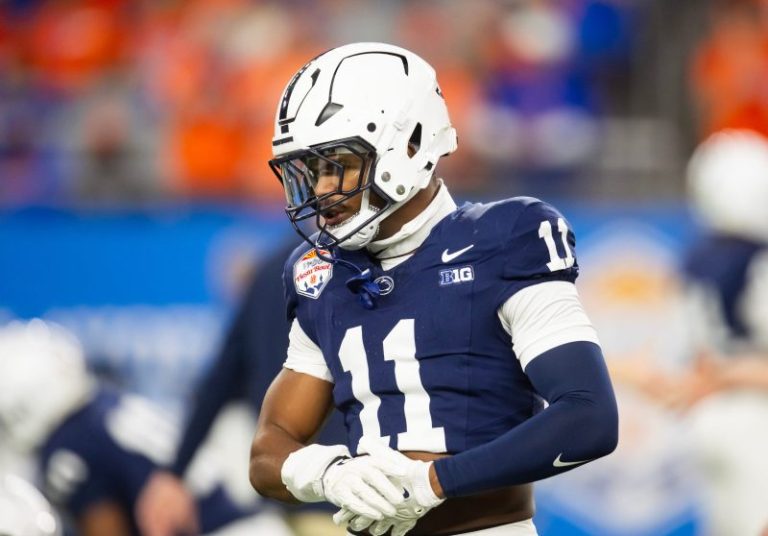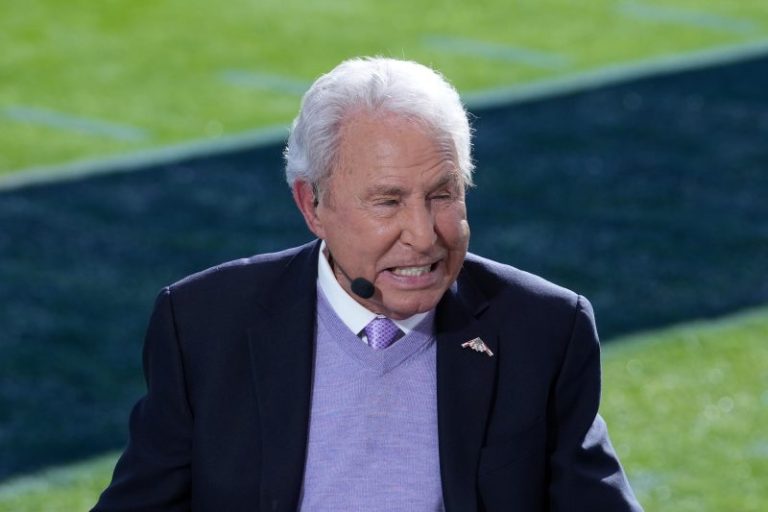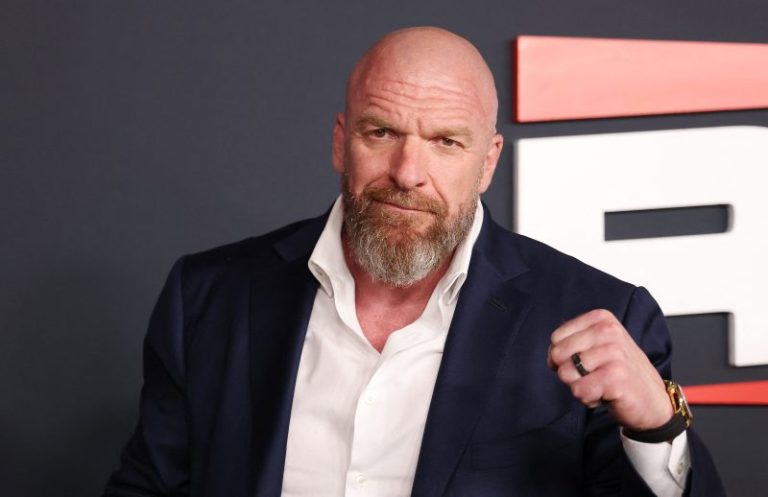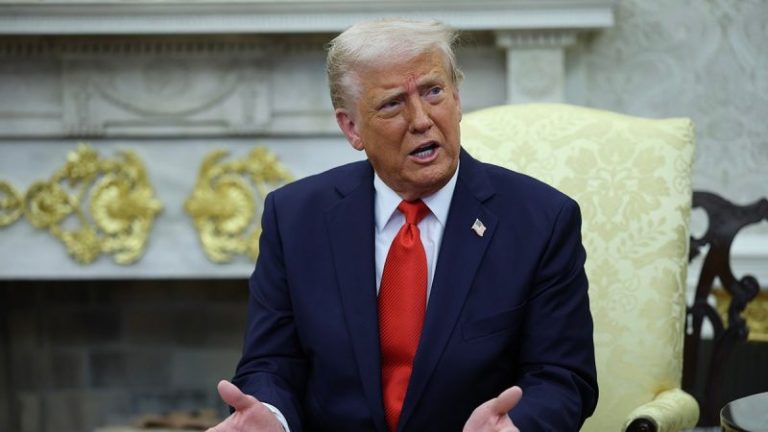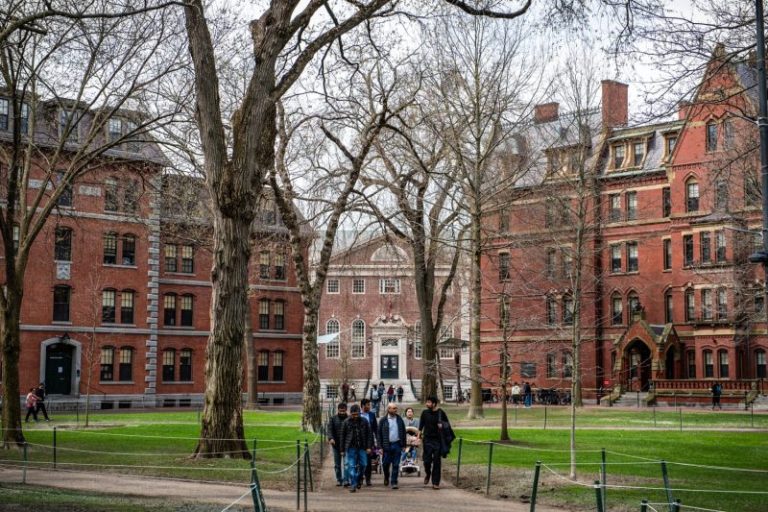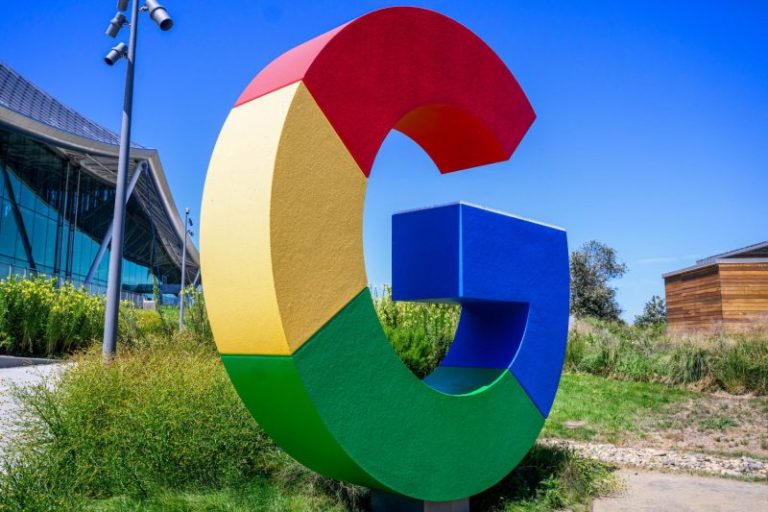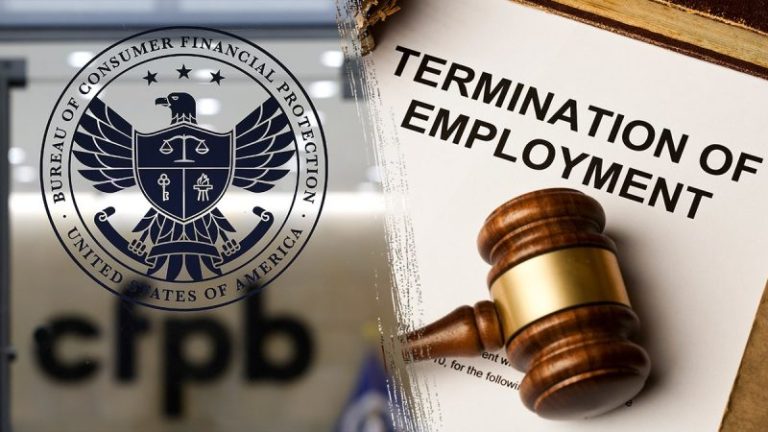Math used to be done with pen and paper. Conversations used to be held in person. NFL mock drafts used to be done by people.
The digital age has given us everything and taken it all away at the same time in the name of convenience. People used to have conviction behind their thoughts, but now won’t hesitate to whip out a calculator or their favorite search engine to look up even the most simple of math problems or other general questions.
Get off my lawn.
Yet the computers are here to stay and the artificial intelligence (AI) revolution is only just beginning. There is no telling where the unchecked world of AI takes us, but we’d be remiss to not at least have a little fun along the way.
Teams have run all kinds of simulations to examine every possible outcome at the 2025 NFL Draft. So what if a computer could predict what the Tennessee Titans would do at No. 1 and how that would impact the Cleveland Browns or the Super Bowl champion, Philadelphia Eagles?
That’s exactly what we set out to do thanks to Google’s Gemini, which predicted the first round of the draft for us, using all of its knowledge – or lack thereof, depending on the pick.
Here’s how Google’s Gemini forecasts the first round of the 2025 NFL Draft.
2025 NFL mock draft: First-round AI picks
1. Tennessee Titans: Cam Ward, QB, Miami (FL)
Gemini isn’t taking the road less traveled with this pick, sticking with Ward at No. 1. It highlighted the shortcomings of Will Levis, while praising Ward’s strong arm, playmaking ability, athleticism, and extensive starting experience as reasons to select the quarterback. This pick feels like a certainty at this stage of the process and with the Miami signal caller being the best at the position, the Titans find an answer to a big question with this pick.
2. Cleveland Browns: Travis Hunter, WR/CB, Colorado
Hunter’s sheer talent was too much to pass up for the chatbot, his two-way ability and unique skillset made the Colorado star worthy of the pick. Like Ward, Hunter at No. 2 feels like a foregone conclusion at this stage, so there are no surprises to this point.
Interestingly enough, however, Gemini views Hunter as having more of an impact on offense as a receiver, which the team’s general manager, Andrew Berry, agrees with. The consensus to this point has been about Hunter’s impact as a cornerback, but he is adamant about playing both sides of the ball. A prospect like that doesn’t come around often and Cleveland lands a potential future star at No. 2.
3. New York Giants: Shedeur Sanders, QB, Colorado
The Giants are in desperate need of a long-term answer at quarterback and Gemini is using that as the reason for picking Sanders at No. 3. It pointed out that making this selection was worth passing on other key needs given the importance of the quarterback spot. The Giants have done extensive work on Sanders during the draft process and are notably meeting with him again before the draft. Despite signing Russell Wilson and Jameis Winston, ‘Big Blue’ is going for a big name by bringing Prime Time’s son to Broadway.
4. New England Patriots: Abdul Carter, EDGE, Penn State
Adding some help on the offensive line for Drake Maye has been a popular pick for the Patriots at No. 4, but New England won’t pass on the best player available here. Carter has an argument for being the best in the entire class and Mike Vrabel will be throwing a party if the Nittany Lion becomes a Patriot. Gemini likes what Carter would bring to the team’s pass rush, saying he would be a game-changer.
5. Jacksonville Jaguars: Will Campbell, OT, LSU
Campbell has been a common pick for the Patriots, but he slips by New England and heads east from LSU to Jacksonville. Gemini is all-in on drafting the best player available and Campbell also fills a need for the Jaguars, who are trying to keep Trevor Lawrence on his feet in 2025. Head coach Liam Coen will enjoy the added reinforcements on offense to begin his tenure, but defense will have to be a point of emphasis later in the draft.
6. Las Vegas Raiders: Ashton Jeanty, RB, Boise State
After adding Geno Smith via trade, the Raiders now find their running back in Jeanty. Gemini acknowledged that drafting Jeanty at No. 6 might be high for a running back, but argues the combination of his talent, the team’s need and Pete Carroll’s philosophy make it a clear choice. One of the top players in the class, Vegas adds a blue chip prospect that should have an instant impact and, more importantly, ensures John Spytek’s son doesn’t leave the family.
7. New York Jets: Armand Membou, OT, Missouri
Gemini isn’t playing games early in the first round, predicting the Jets will take Membou at No. 7. Unlike other chatbots, Google’s hasn’t gone off the board just yet. Membou has a ton of potential and would give the Jets an anchor on both sides of the offensive line after drafting Olu Fashanu last year. Gemini likes the idea of building a foundation up front and Membou certainly accomplishes that goal.
8. Carolina Panthers: Tetairoa McMillan, WR, Arizona
Bryce Young is getting some help as the Panthers add the Arizona receiver in the top-10. McMillan does come with some concerns about speed, but wins with his size and athleticism. The chatbot took note of Carolina’s need for receiving help and ultimately took McMillan to satisfy that. If this comes to fruition, expect many to make a Mike Evans comparison given the Dave Canales connection to the Tampa Bay Buccaneers.
9. New Orleans Saints: Mason Graham, DT, Michigan
Everything is pointing towards the Saints drafting a quarterback, but Gemini doesn’t have time for your funny business. They instead chose to pick Graham, who almost slipped out of the top-10. The former Michigan man will add some youth to a New Orleans defense that could use some.
10. Chicago Bears: Jahdae Barron, CB, Texas
Barron is a plug-and-play player that adds plenty of versatility to the Chicago defense. It’s a curious pick given the Bears needs and desire to build around Caleb Williams on offense, but apparently Gemini believes that you can never have too much of a good thing. Regardless, Barron would be a shocking pick when there are more pressing needs elsewhere.
11. San Francisco 49ers: Will Johnson, CB, Michigan
Robert Saleh is back in the defensive coordinator seat in San Francisco, but the coach needs some cornerbacks upon returning to the Bay Area. Charvarious Ward has departed for Indianapolis, leaving a hole in the secondary and Johnson is a great way to fill that spot. He comes with injury concerns and still hasn’t run a 40-yard dash, but the prospect has done enough in college to warrant this pick.
12. Dallas Cowboys: Emeka Egbuka, WR, Ohio State
The Cowboys have no shortage of needs and will take care of the receiver spot by taking Egbuka, according to Gemini. It landed on this selection after making note of the need for another receiver not-named CeeDee Lamb. That’s hard to argue with and we’ll tip our cap to the chatbot, even if we would’ve opted for Matthew Golden in this instance, but to each their own.
13. Miami Dolphins: Princely Umanmielen, EDGE, Florida
Maybe the Dolphins have a thing for royalty as they reach for Princely Umanmielen with the 13th pick. Miami has no shortage of picks in this draft, but this is quite the reach with other pass-rushing talent on the board. Gemini likes the speed and power that the Florida edge brings, while we would’ve preferred to see someone like Jalon Walker, Mykel Williams or, more importantly, an offensive lineman like Kelvin Banks Jr.
14. Indianapolis Colts: Tyler Warren, TE, Penn State
It’s the last chance for Anthony Richardson to solidify the starting job in Indianapolis going forward. Drafting Warren would go a long way in helping the Colts arrive at a conclusion. Gemini pointed out Warren’s all-around skillset and the lack of a tight end on the roster. Good pick. No notes.
15. Atlanta Falcons: Mykel Williams, EDGE, Georgia
The Falcons couldn’t get after the quarterback in 2024 and are determined to avoid repeating that in 2025. Drafting Williams is a good way to try and solve that problem. The Georgia native goes from Athens to Atlanta, giving the Peach State fans a true homegrown player to root for.
16. Arizona Cardinals: Jack Sawyer, EDGE, Ohio State
After adding Josh Sweat in free agency, the Cardinals strike by adding another edge rusher, this time from Ohio State. Gemini is planting it’s virtual flag on Sawyer, saying he has a higher floor than Jalon Walker and presents as a traditional, consistent edge rusher. While this price is quite steep for Sawyer, maybe the computer knows something we don’t.
17. Cincinnati Bengals: Walter Nolen, DT, Ole Miss
The Bengals need to beef up the interior and they find that by selecting Nolen. The former Ole Miss Rebel can slide in and play a big role on Cincinnati’s defensive line, especially if they find a way to figure out the Trey Hendrickson contract situation.
18. Seattle Seahawks: Grey Zabel, OL, North Dakota State
It could be a reach to draft an interior lineman at this stage, but the Seahawks aren’t in the mood to take the best player available with a major hole on the offensive line. Seattle’s front has been a problem for what feels like forever, so they opt for Zabel to protect their investment in Sam Darnold.
19. Tampa Bay Buccaneers: Donovan Ezeiruaku, EDGE, Boston College
Tampa needs someone to get after the quarterback and Todd Bowles would be happy to land someone like Ezeiruaku with this pick. Bowles is not one to be shy when it comes to sending the blitz, but he doesn’t want to be forced into doing that just to generate some pressure. The Buccaneers’ edge rusher remodel gets a big boost with a Boston College prospect that Gemini liked for his fit, explosiveness and pass-rushing upside.
20. Denver Broncos: Omarion Hampton, RB, North Carolina
Sean Payton gets his running back. After living life without one last year, the Broncos finally add a running game to the offense. Denver sat out the free-agent market and instead get one in Round 1 to take some pressure off Bo Nix.
21. Pittsburgh Steelers: Derrick Harmon, DT, Oregon
The Steelers have no one to blame but themselves for their quarterback situation. Rather than address it in the first round, they’ll pretend it’s not a problem at all by adding Harmon to the defensive line. Gemini believes Harmon is someone the Steelers would likely target in the draft and also praised his ability to be a disruptor. At some point, they’ll need to figure out the quarterback spot. Perhaps that’ll be a problem for Day 2 or 3.
22. Los Angeles Chargers: Luther Burden III, WR, Missouri
Jim Harbaugh’s team need another pass-catcher, but he might not appreciate Gemini’s selection at this pick. Burden III projects as a slot receiver, which would clash with Ladd McConkey. Los Angeles could benefit from size in their pass-catching addition, so the fit with the Missouri receiver is questionable.
23. Green Bay Packers: Matthew Golden, WR, Texas
Gemini wants the Packers to put the home crowd into a frenzy on draft night, taking the speedster from Texas. The Packers find themselves in need of a receiver after injuries and lack of development plagued the room. Golden fills that playmaking role as a reliable option. Green Bay has often ignored adding to the receiver position in these situations, so don’t be surprised if you look up and see a pig flying through the sky.
24. Minnesota Vikings: Malaki Starks, S, Georgia
Brian Flores would enjoy adding someone like Starks to his aggressive defense. Minnesota is able to snag the safety that fell down the board, shoring up the secondary and also positioning themselves for life after Harrison Smith. The Vikings could’ve targeted offensive or defensive line here, but instead opt to take a talented prospect that should thrive thanks to his athleticism and playmaking, according to the chatbot.
25. Houston Texans: Shemar Stewart, EDGE, Texas A&M
Only a higher power knows what the Texans’ plan is this offseason, as the team took a torch to their contending window in the last few months. The offensive line still needs to be fixed, the receiver position got worse and C.J. Stroud isn’t in a better spot to win than he was when the season ended. So naturally, Houston opts for an edge-rusher to add depth to arguably their best position? Gemini liked Stewart’s connection because of his experience playing at a Texas school in addition to his athleticism and potential. It won’t keep Stroud upright, but it will keep opposing quarterbacks up at night. Stewart is a fine player, but this is a curious pick.
26. Los Angeles Rams: Mike Green, EDGE, Marshall
The Rams have a need in the secondary, but instead continue their investment in a young defense by adding to the pass rush with Green. Los Angeles will have to address the secondary later, but with Barron, Johnson and even Starks off the board, it’s hard to argue with adding more to the edge. Gemini likes Green’s upside and how productive he was in college. In this hypothetical, the Rams will hope the chatbot is right about that.
27. Baltimore Ravens: Tyler Booker, OG, Alabama
While the expectation is that we’ll see defense with the Ravens’ pick, they instead opt to address the offensive line with the 27th pick. A plug-and-play guard, Booker slides right into the group up front for Baltimore. Gemini lauds Booker for his physicality and strong work ethic, calling him a ‘Ravens-type player.’
28. Detroit Lions: Shavon Revel Jr., CB, East Carolina
The Lions continue adding to their secondary by snagging the long and athletic Revel in the opening round. The D.J. Reed signing didn’t make cornerback a necessity, but last year’s injuries must have the team feeling a little uneasy heading into 2025. We would’ve expected a pass-rusher or offensive line depth here, but Gemini must know something we don’t, saying Revel’s talent and upside were worth the price of admission.
29. Washington Commanders: Jalon Walker, LB/EDGE, Georgia
The Commanders might’ve crashed the NFL’s phone lines trying to make this pick. Once they got over the shock of Walker being available, they rushed to turn the card in before buying all the stock in Google’s Gemini. Dan Quinn would be over the moon getting the versatile Walker with the 29th pick, which was made possible thanks to a few shortcomings in Gemini’s artificial mind. The ‘tweener’ label, size concerns, consistency and limited full-time experience were enough for the chatbot to push Walker down the board.
30. Buffalo Bills: Maxwell Hairston, CB, Kentucky
Buffalo addresses a need in the secondary, selecting speedy Hairston in Round 1. The Kentucky product stole headlines at the NFL combine for his blazing 4.28 in the 40-yard dash. Bills fans will probably wish they had Hairston when they were being tormented by Tyreek Hill in the playoffs every year, but this is a welcome addition to Buffalo’s secondary regardless. He is on the smaller side, however, but Hairston makes up for that with his ball skills, as Gemini points out.
31. Kansas City Chiefs: Josh Simmons, OT, Ohio State
The Chiefs saw their offensive line become an issue again in the Super Bowl, something they’ll be determined to avoid repeating next season. Kansas City invests in Simmons at the draft, securing what they hope will be their starting left tackle for years to come. A knee injury bumped the Buckeye down the board, but Gemini notes that protecting Patrick Mahomes makes this pick a necessity.
32. Philadelphia Eagles: James Pearce Jr., EDGE, Tennessee
With the final pick of the first round, Gemini is heading to the Volunteer State to find a new edge rusher for the Eagles. The chatbot secured the services of Pearce for the Super Bowl champions, which should bolster a pass rush that will need some reinforcements to remain at their best in 2025. A year ago, Pearce was considered to be a top prospect in this class. He might’ve fallen down the board in the last 12 months, but Gemini notes the prospect’s high upside fits nicely on this team.

